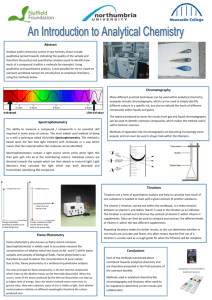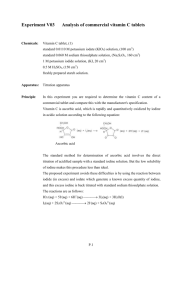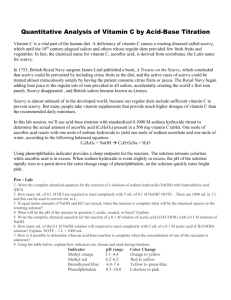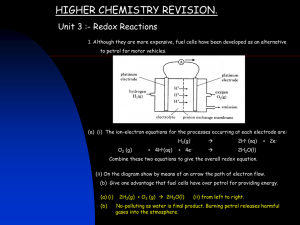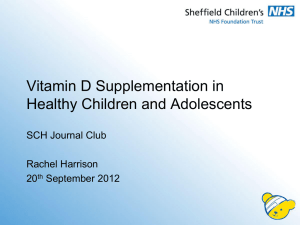Vitamin C concentration practical
advertisement
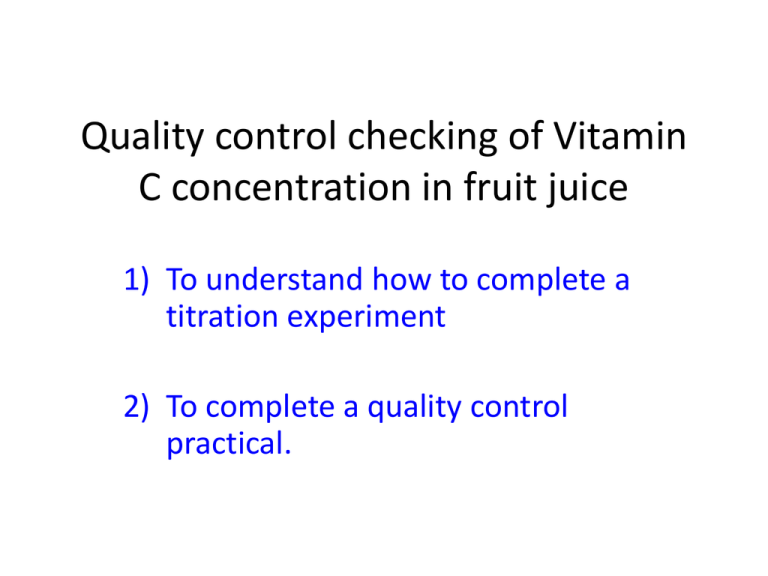
Quality control checking of Vitamin C concentration in fruit juice 1) To understand how to complete a titration experiment 2) To complete a quality control practical. What you will be marked on: Vocational context Any food or drinks organisation will need to identify the level of different nutrients (ingredients) in their product (for quality control and packaging information). This test will allow you to identify the concentration of vitamin C in Sunny Delight. Background information 1) DCPIP is a chemical which changes from blue to clear (pink) when you add vitamin C to it. 2) Titration is a method to accurately measure how much of a chemical you have added. 3) By using known concentrations of vitamin C we can work out the concentration of vitamin C in a drink. Titration demonstration Risk Assessment Hazard Risk level Action (Low, Med, High) Method 1) Use a pipette to add 2 ml of DCPIP solution to the conical flask. 2) Add 0.001% vitamin C solution to the burette. 3) Add the vitamin C to the conical flask until the solution becomes clear. 4) Record how much vitamin C was added. 5) Repeat with other solutions. 6) Repeat this method with the unknown Sunny Delight sample. Results table Vitamin C solutions 0.001% 0.002% 0.003% Titration 1 Titration 2 Titration 3 (Volume of vit (Volume of vit (Volume of vit C solution cm3) C solution cm3) C solution cm3) Mean Average (cm3) Calibration Graph Volume of Vitamin C required (cm3) Vitamin C solution (%) The Sunny Delight solution Repeat the experiment sunny delight solution (3 times and take an average). Checking against the label What is the concentration from the graph? _____________ % What is this in mg per 100 cm3 ______________ mg / 100cm3 The sample was diluted by 10, so what was the original sample: ______________ mg / 100cm3 Evaluation 1) How did your result compare against the value stated on the bottle? 2) What were the limitations of your practical? 3) How would you improve your result given more time and extra money. Demonstrating advanced calculations The mean average calculation will get you the basic marks (3/5). Doing a standard deviation calculation correctly will get you further marks: Your calculation √ (titration1 – mean)2 + (titration2 – mean) 2 + (titration3 – mean) 2 3-1 What you will be marked on:





